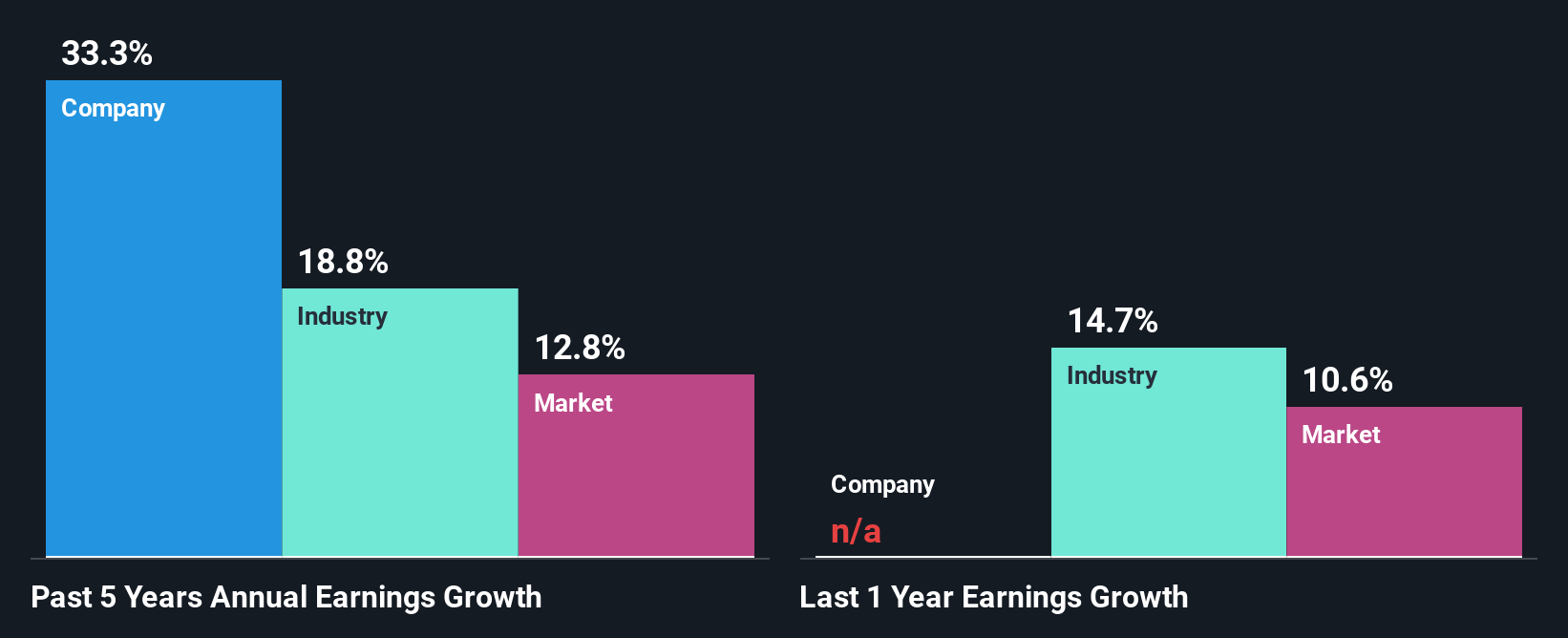- Australia
- /
- Consumer Services
- /
- ASX:EDU
Is EDU Holdings Limited's (ASX:EDU) Stock's Recent Performance Being Led By Its Attractive Financial Prospects?
Most readers would already be aware that EDU Holdings' (ASX:EDU) stock increased significantly by 30% over the past three months. Since the market usually pay for a company’s long-term fundamentals, we decided to study the company’s key performance indicators to see if they could be influencing the market. Particularly, we will be paying attention to EDU Holdings' ROE today.
Return on equity or ROE is a key measure used to assess how efficiently a company's management is utilizing the company's capital. In simpler terms, it measures the profitability of a company in relation to shareholder's equity.
How Is ROE Calculated?
ROE can be calculated by using the formula:
Return on Equity = Net Profit (from continuing operations) ÷ Shareholders' Equity
So, based on the above formula, the ROE for EDU Holdings is:
47% = AU$8.8m ÷ AU$19m (Based on the trailing twelve months to June 2025).
The 'return' is the yearly profit. So, this means that for every A$1 of its shareholder's investments, the company generates a profit of A$0.47.
See our latest analysis for EDU Holdings
What Is The Relationship Between ROE And Earnings Growth?
We have already established that ROE serves as an efficient profit-generating gauge for a company's future earnings. Based on how much of its profits the company chooses to reinvest or "retain", we are then able to evaluate a company's future ability to generate profits. Assuming all else is equal, companies that have both a higher return on equity and higher profit retention are usually the ones that have a higher growth rate when compared to companies that don't have the same features.
EDU Holdings' Earnings Growth And 47% ROE
First thing first, we like that EDU Holdings has an impressive ROE. Secondly, even when compared to the industry average of 8.5% the company's ROE is quite impressive. So, the substantial 33% net income growth seen by EDU Holdings over the past five years isn't overly surprising.
Next, on comparing with the industry net income growth, we found that EDU Holdings' growth is quite high when compared to the industry average growth of 19% in the same period, which is great to see.

The basis for attaching value to a company is, to a great extent, tied to its earnings growth. It’s important for an investor to know whether the market has priced in the company's expected earnings growth (or decline). This then helps them determine if the stock is placed for a bright or bleak future. One good indicator of expected earnings growth is the P/E ratio which determines the price the market is willing to pay for a stock based on its earnings prospects. So, you may want to check if EDU Holdings is trading on a high P/E or a low P/E, relative to its industry.
Is EDU Holdings Using Its Retained Earnings Effectively?
EDU Holdings' three-year median payout ratio to shareholders is 16%, which is quite low. This implies that the company is retaining 84% of its profits. So it seems like the management is reinvesting profits heavily to grow its business and this reflects in its earnings growth number.
Conclusion
On the whole, we feel that EDU Holdings' performance has been quite good. Particularly, we like that the company is reinvesting heavily into its business, and at a high rate of return. Unsurprisingly, this has led to an impressive earnings growth. If the company continues to grow its earnings the way it has, that could have a positive impact on its share price given how earnings per share influence long-term share prices. Remember, the price of a stock is also dependent on the perceived risk. Therefore investors must keep themselves informed about the risks involved before investing in any company. To know the 2 risks we have identified for EDU Holdings visit our risks dashboard for free.
Valuation is complex, but we're here to simplify it.
Discover if EDU Holdings might be undervalued or overvalued with our detailed analysis, featuring fair value estimates, potential risks, dividends, insider trades, and its financial condition.
Access Free AnalysisHave feedback on this article? Concerned about the content? Get in touch with us directly. Alternatively, email editorial-team (at) simplywallst.com.
This article by Simply Wall St is general in nature. We provide commentary based on historical data and analyst forecasts only using an unbiased methodology and our articles are not intended to be financial advice. It does not constitute a recommendation to buy or sell any stock, and does not take account of your objectives, or your financial situation. We aim to bring you long-term focused analysis driven by fundamental data. Note that our analysis may not factor in the latest price-sensitive company announcements or qualitative material. Simply Wall St has no position in any stocks mentioned.
About ASX:EDU
EDU Holdings
Through its subsidiaries, provides tertiary education services in Australia.
Excellent balance sheet and good value.
Market Insights
Community Narratives



